In 1945, Roy Weatherby founded his namesake company in California, introducing three cartridges that became synonymous with speed. That has always been Weatherby’s calling card: high velocity equals flat trajectory, and they’ve stuck with that concept for over 70 years. Roy’s original trio – the .257, .270 and .300 Weatherby magnums – is embraced by many hunters to this day, and those who spend any considerable amount of time with them become fervent fans. I know many hunters and quite a few gun writers who hold the original Weatherby cartridge – Roy’s personal favorite .257 Weatherby Magnum – as their go-to hunting cartridge for a large number of species.
Today, Weatherby has been passed from Roy’s son Ed to his son Adam – I was lucky enough to have been at the event where the baton was passed at the SHOT Show –and the company remains on the cutting edge of cartridge development. The latest Weatherby offering is one I’ve anticipated for quite a while: the 6.5-300 Weatherby Magnum.
Roy’s two initial cartridges – the .257 Weatherby Magnum and .270 Weatherby Magnum – were based on the belted Holland & Holland case, shortened to just over 2 ½”, so as to run through a standard long (read .30-’06 length) action. His third cartridge – the .300 Weatherby Magnum – maintained the H&H magnum length case, and requires the longer magnum-length action. It is the .300 Weatherby case that is the basis for Weatherby’s latest offering, being simply necked down to hold the 6.5mm bullets that are all the rage.
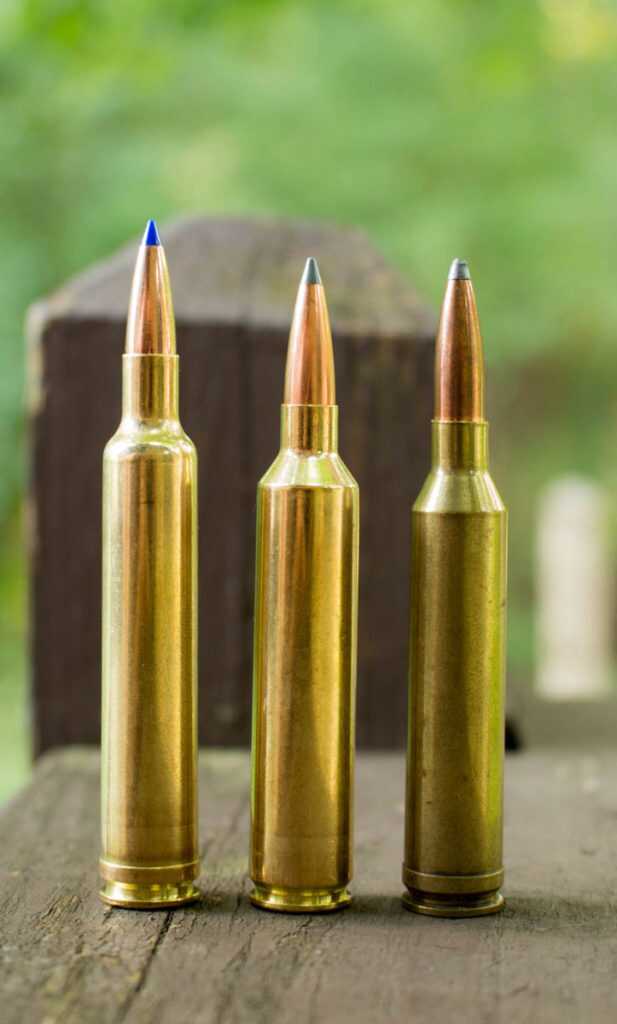
L-R: the 6.5-300 Weatherby Magnum, the .26 Nosler and the .264 Winchester Magnum. The 6.5-300 is the fastest of all.
It makes perfect sense to me; finally, the shooting world has discovered what the 6.5×55 has been offering since the tail-end of the 19th century. The long, high Sectional Density bullets – and more recently, the fantastically high Ballistic Coefficient bullets to boot – have long given exceptional external and terminal ballistics. Combine that with a launching platform with enough powder to blow a bridge, and you’ve got something exceptional. However, exceptional comes at a price. This much powder, with the smaller 6.5mm bore diameter, is invariably going to result in throat erosion and pre-mature barrel wear. Are you willing to accept that? If so, then let us sally forth and rejoice in the glorious overbore.
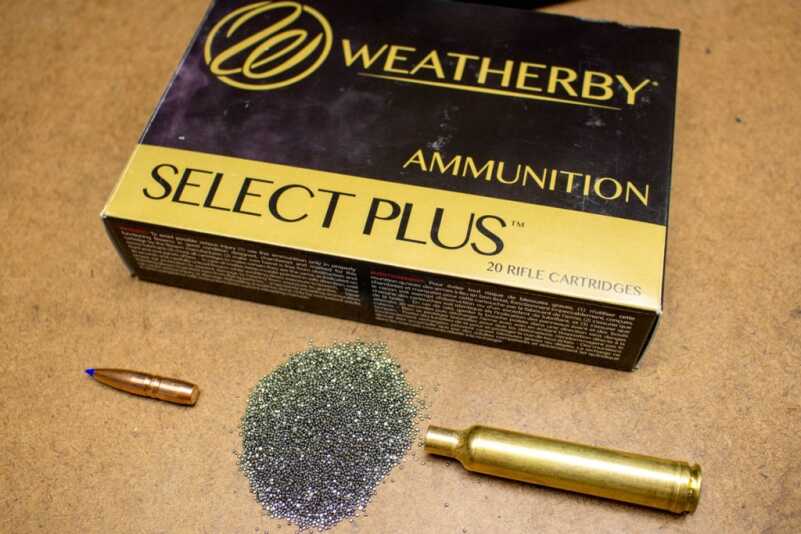
Upon disassembling a Weatherby factory cartridge, the author found they chose a spherical powder to fuel the 6.5-300 Magnum
The Mark V Deluxe
The 6.5-300 Weatherby I tested came in the flagship of the Weatherby fleet: the Mark V Deluxe rifle. This was – in my youth – an object of unbridled admiration, as I’d see the Mark V Weatherby advertised in numerous hunting magazines of the late 1970s and early 1980s. Sleek, shiny, and looking like it meant nothing but business, the Mark V represented a level of firearm I’d never laid eyes on. Among the numerous Winchesters, Savages and Remingtons I saw in the hands of our local deer hunters, a Weatherby seemed like other-worldly. I’ve had the opportunity to shoot a few of them now, and while the wide-eyed stare of youth may have faded a bit, the Mark V makes for a beautiful rifle. It has a unique nine-lug bolt, with a shallow, 54-degree bolt throw, which makes for fast follow-up shots. The Monte Carlo stock – while not necessarily the most classic of looks – certainly is one of the best stock designs for the transmission of recoil; the angle of the comb keeps the smack away from the shooter’s cheek. When you’re talking about the Weatherby line of cartridges – well known for their level of velocity and correlative recoil speed – this is a good thing.
The basis of the Weatherby action is the large bolt, which operates in a push-feed manner, in that the cartridge is not engaged and held by the bolt face until chambered. For this reason, I feel the Mark V action to be perfectly suitable for all non-dangerous game species, but I’m one of those guys who most definitely prefers the controlled round feed actions like the pre-’64 Winchester 70 and Mauser 98 for dangerous game work. But, for a cartridge launching 6.5mm bullets, the Mark V does just fine.
It sports a two-position safety, which rotates fore and aft – with the forward position being ‘fire’ – with a cocking indicator at the rear of the bolt so the operator can tell at a glance if the rifle has been put into the battery. The Weatherby LXX trigger has been updated for a crisp, positive feel, and is adjustable down to a weight of 2.5 lbs.; and I can report that the trigger of the test rifle was a pleasure to use both on the bench and from field positions. That nine-lug bolt – designed so the lugs are at body diameter – has very little chatter, and glides easily throughout the receiver, yet offers all the strength a shooter could ask for. So, we most definitely have the platform with which to send bullets at serious velocities. Let’s take a better look at Weatherby’s newest cartridge.
The 6.5-300 Weatherby Magnum
As stated earlier, this is simply the .300 Weatherby Magnum cartridge necked down to hold 6.5mm bullets, retaining the signature double-radius shoulder, and the belt left over from the original Holland & Holland design from which the Weatherby cases are derived. But, while maintaining the case capacity of the .300 Weatherby and using those 6.5mm bullets of 140-grains or less, we can easily understand how this cartridge will attain extraordinary velocities. That’s the Weatherby formula, and it comes with both benefits and detractions. Pushing a 140-grain Berger VLD Hunting bullet to an advertised muzzle velocity of 3,315 fps, you can most certainly expect a wonderfully flat trajectory – in fact, flatter than even the .300 Remington Ultra Magnum with 180s – and plenty of energy. The 127-grain Barnes LRX load runs even hotter, leaving the muzzle at 3,530 fps, offering a very tough bullet, which can handle the high impact velocities of a close shot, yet perform wonderfully at the far edge of sane hunting distances.

With the signature double radius shoulder, the 6.5-300 is the .300 Weatherby necked down to hold 6.5mm bullets
However, that performance will come at a price: throat erosion and barrel wear are a real threat, so I feel that cartridges in this class need to be treated a bit differently, especially at the bench. Rapid firing of multiple shots will most definitely speed up the wearing process, so I will advise limiting your groups to three shots, and letting the barrel cool completely between those groups. A hot barrel – and a five-shot group will most definitely heat that barrel up – will invariably see a rise in the point of impact. Should you feel the need to evaluate your rifle with a five-shot group and that kind of heat, so be it, but understand it’s not a good thing to do often. Accordingly, I tested three shot groups for this review.
The trajectory of the 6.5-300 is a large part of its appeal. With the 140-grain Berger load, a 300-yard zero will result in your bullet striking 2.7” high at 100 yards, and 3.3” high at 200 yards; both will still take out the pump on a pronghorn or whitetail. That bullet will drop 7.7” at 400 yards and 20.3” at 500 yards; that’s a wonderfully flat trajectory, and 500 yards is quite a poke at a game animal. If you have to hold off fur with the 6.5-300 Weatherby, perhaps you should try and get a bit closer. That Berger load is still carrying over 1,900 ft.-lbs. of energy at the 500-yard mark; it starts out with just over 3,000 ft.-lbs, so it’s easy to see how well these high B.C. bullets will retain their energy.
At the bench
For accuracy testing, I mated A Swarovski Z6(i) 1.7-10×42 scope, which I feel is an excellent choice for a hunting rifle of this caliber, as it is bright, clear, and offers a magnification range that is usable across many different types of hunting scenarios. With a fine crosshair and the option for the finest amber dot at the center, the Swarovski makes up in clarity what it lacks in magnification. I feel a 10x of this quality allows the shooter to accurately place his or her shots at sane hunting distances (for me, that’s inside of 400 yards) while keeping the weight down to best preserve the balance of a hunting rifle. The 30mm main tube allows all sorts of light in, and the fine duplex crosshair doesn’t obscure half the animal at further distances. I set the Swarovski in a set of Talley steel rings and bases, which allows the scope to ‘go to sleep’; I’ve had nothing but great success with Talley mounts, and they require no more work than simply installing them properly.

Talley rings and bases held the Swarovski on the rifle. Assemble them properly, and you’ll never have to give them another thought.
The Weatherby Mark V stock design – while being the youngest of the now-classic designs – is a pleasure to shoot, especially from the bench. The comb height worked very well, even with the larger 30mm tube rifles, giving good cheek weld, and taking the sting out of a cartridge that certainly has the potential to be a snotty little bugger. The Mark V’s wide trigger shoe gives a comfortable and even relaxed feel for bench work; I’ve always been a fan of triggers with a wide profile, as I personally feel they disperse the weight of the pull. All in all, shooting the Mark V was a pleasurable experience. Perhaps this rifle isn’t everyone’s cup of tea, but they’ve got a well-deserved following,
Despite the huge case and correlative powder charge, the recoil of the 6.5-300 Weatherby was very manageable, even from the bench; I attribute part of that to the rifle’s weight and design. The 6.5-300, in this rifle, will allow a shooter to spend time at the range without being pounded to dust or developing a flinch. I tested two of the five loads that Weatherby offers: the 140-grain Berger VLD Hunting load and the 127-grain Barnes LRX load. My test rifle showed a definite preference for the lighter Barnes load, though the Berger load wasn’t exactly terrible. Measuring velocities with an Oehler 35P chronograph, I tested the factory ammunition at 100 yards.
The 140-grain Berger load put three shots into an average of 1.15”, with velocities averaging 3,362 fps. While this may not be stellar accuracy when compared to what some of the other 6.5mm cartridges are capable of, it is more than acceptable for any hunting cartridge. The best group of this lot measured 0.75”, and the worst 1.65”, and the velocity spread was 40 fps. The 127-grain Barnes LRX load proved more consistent in this particular rifle, with the velocities averaging 120 fps below the advertised velocity, for an average of 3,410 fps. The groups averaged 0.80”, with the velocity spread being at 18 fps. Barrels are funny that way, and perhaps another Mark V may prove to like the heavier bullets better; either way, I’d feel comfortable using the Weatherby factory ammunition in any hunting scenario where the bullet is applicable.
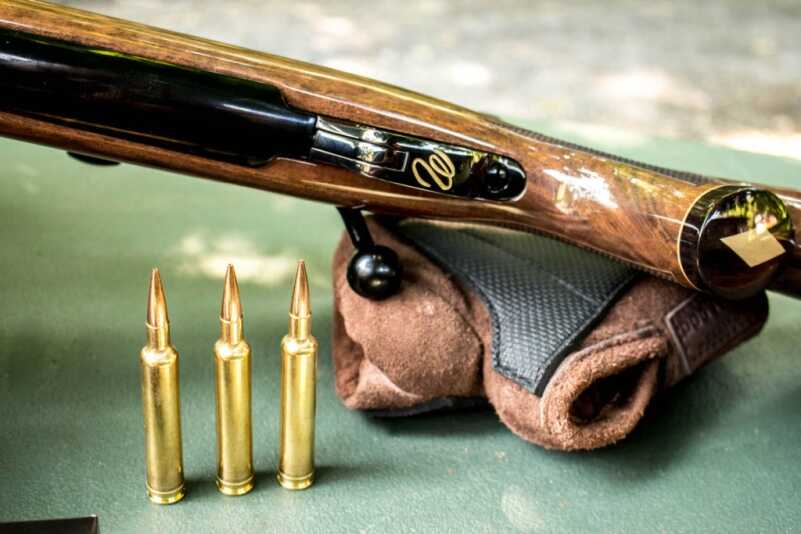
6.5-300 Weatherby loaded with the 140-grain Berger VLD Hunting bullet. With a high B.C. and plenty of velocity, this load will definitely reach out.
In conclusion
If you’re a fan of the Weatherby family of rifles and cartridges, this is certainly a combination with all sorts of appeal. The rifle is definitely classic Weatherby, from the gloss finish to the white diamond on the grip cap, to the immediately recognizable profile. The action was smooth, the rifle comfortable to shoot, and it’s certainly an attention-getter when you uncase it among friends.
The cartridge is equally recognizable, with the radiused shoulder and huge case capacity. There are those will deem this velocity level unnecessary, and while to a certain degree they may be right, it’s fun to have the biggest/fastest on the block. The 6.5-300 Weatherby, the .26 Nosler, and the .264 Winchester Magnum have all been the topic of debate, with regards to their velocity, but I’ve never seen any animal taken with one of them that was too dead. Can the same shots be made with a 6.5 Creedmoor or 6.5×55 Swede? Perhaps, but realize the 6.5-300 Weatherby Magnum has more velocity at 300 yards than the Creedmoor does at the muzzle, and if you subscribe to the “speed kills” theory, there is no other factory 6.5mm cartridge that will do it like the 6.5-300 Weatherby.
Is it an economical choice, which will run uber-efficiently? No. Like owning a vintage muscle car, one doesn’t exactly concern themselves with gas mileage. Is it effective? Most certainly. I see this cartridge as a great choice for distant whitetails across a field, or a pronghorn on the prairie. Taking full advantage of the 6.5mm bullets, this cartridge will shoot flat, and resist wind-deflection better than just about anything else. If you’re a speed freak, who enjoys the quickest cartridges available, then the 6.5-300 Weatherby is most definitely a cartridge you should look into.
6.5-300 Weatherby Magnum – Factory Loads (as advertised www.weatherby.com )
- 127-grain LRX M.V. 3,531 fps MSRP: $99/box of 20
- 130-grain Swift Scirocco M.V. 3,476 fps MSRP: n/a
- 140-grain soft point M.V, 3,304 fps MSRP: $60/box of 20
- 140-grain Berger VLD Hunting M.V. 3,315 fps MSRP: $99/box of 20
- 140-grain Swift A-Frame M.V. 3,395 fps MSRP: $99/box of 20
- Weatherby Mark V Deluxe rifle
Weight: 8 lbs.
Overall Length: 46 5/8”
Barrel: 26” blued steel, 1:8” twist rate
Length of Pull: 13 ½”
Magazine capacity: 3+1
Stock: Walnut, Monte Carlo style
MSRP: $2,700
Visit Weatherby by clicking HERE


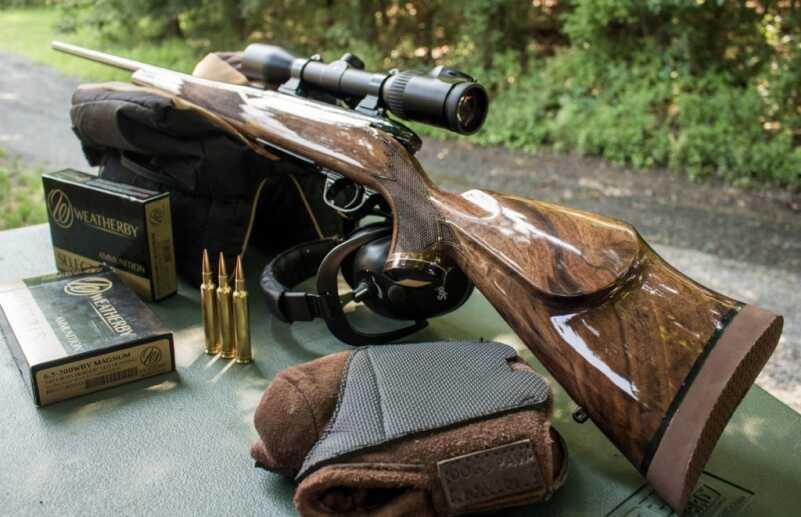


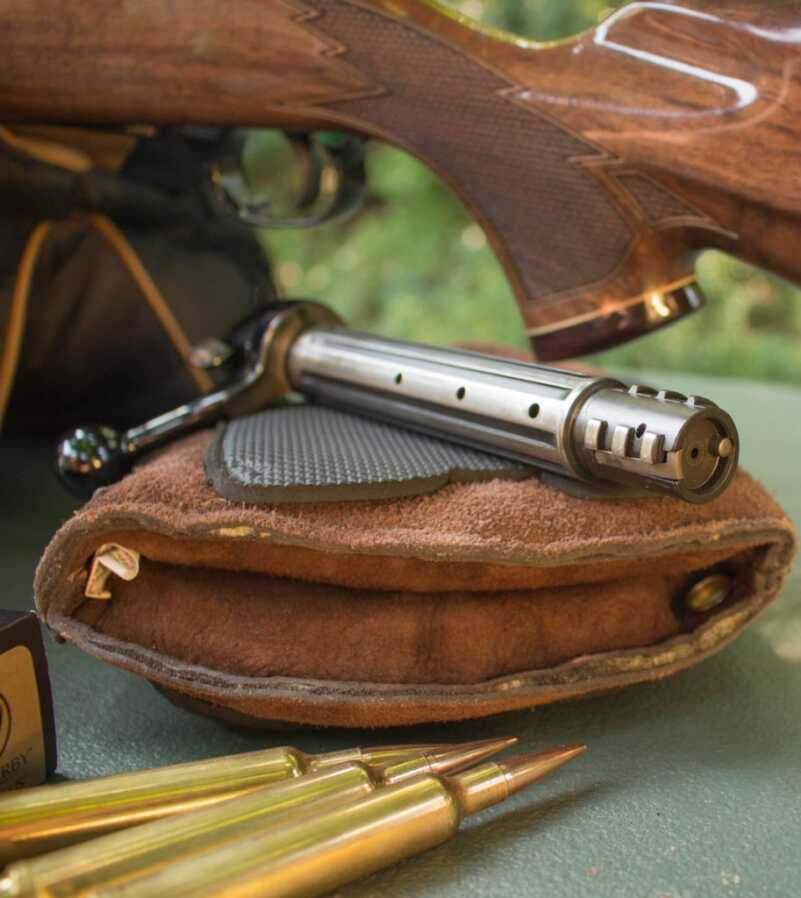
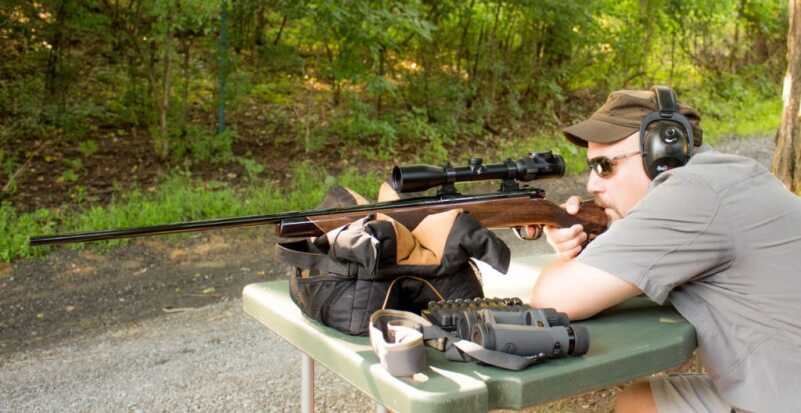

Best bullet for elk ?
Interesting even if its not my cup of tea, and its nice to see an old brand still experimenting. I would like to see an estimated lifespan on the barrel, it can’t be over 2000 rounds before you see some degradation.